“Today our fellow citizens, our way of life, our very freedom came under attack in a series of deliberate and deadly terrorist acts. The victims were in airplanes or in their offices: secretaries, business men and women, military and Federal workers, moms and dads, friends and neighbors. Thousands of lives were suddenly ended by evil, despicable acts of terror.”
~President George W. Bush
History is often not for the faint of heart. There are hard lessons to be learned and while it may be easier to tuck a few of them into a vault and lock them away forever, neither you nor I can do that.
Many of the events which took place on this date throughout history stagger the imagination. They are not by any stretch, pleasant memories, but they are all a part of our history … Our Story.
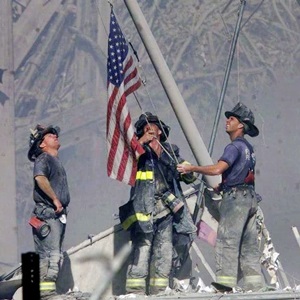
As tragic as September 11, 2001 was, it does not stand alone
The date of September 11 is truly a date from Hell
==================================================

1297 – William Wallace and Andrew Moray led an army of 6,000 Scots to victory over an English Army of 10,000 at the Battle of Stirling Bridge.
The battle was depicted in the film Braveheart, although the battle scene – and the entire movie – was filled with numerous historical errors.
The battle was fought on and near a wooden bridge, not in an open field. Before the English could finish crossing, the Scots attacked. In the frenzy to retreat back over the bridge, the whole thing collapsed into the River Forth. Many of the English drowned while those trapped on the wrong side were slaughtered by the Scots.
The rebuilt bridge (shown above with the Wallace Monument in the background) is approximately 200 feet downstream of the original bridge.
In summary … The events in the film aren’t accurate, the dates aren’t accurate, the characters aren’t accurate, the names aren’t accurate, and the clothes aren’t accurate.
So even though Braveheart was, in director Mel Gibson’s words, “cinematically compelling,” it remains one of the most historically inaccurate movies ever produced.

1609 – Explorer Henry Hudson sailed into New York harbor and discovered Manhattan Island and the river which would bear his name – 392 years to the day before that island would be the site of the worst attack on American soil in history.
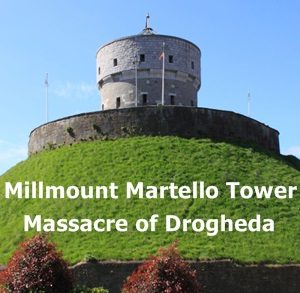
1649 – At the Massacre of Drogheda, Ireland, Oliver Cromwell – Lord Protector of the Commonwealth of England – ordered the deaths of 3,000 English Royalist and Irish Confederate soldiers.
The day before, Cromwell had a letter delivered to Millmount Fort, warning the governor, Sir Arthur Aston, of the consequences if he refused to surrender. Aston refused, even though his garrison was critically short of gunpowder and ammunition. On this date, Cromwell’s forces, outnumbering the Irish by a 4-to-1 ratio, crushed the opposition.
In an act of unparalleled savagery and treachery beyond any slaughterhouse, Cromwell’s troops also murdered an estimated 2,000 civilians. According to British historian John Morrill, the massacre at Drogheda, “was without straightforward parallel in 17th century British or Irish history.”

1683 – 150,000 warriors from the Muslim Ottoman Empire, led by Grand Vizier Merzifonlu Kara Mustafa Pasha, began a 2-day battle at Kahlenberg mountain in Vienna against the Holy Roman Empire (in league with the Polish–Lithuanian Commonwealth) under the command of King John III Sobieski.
The Battle of Vienna was notable for the largest cavalry charge in history – 18,000 Polish horsemen charging down the hills and routing the Ottoman forces – leaving 15,000 Turks dead.

1697 – It was another bad day for the Turks.
The Ottoman army, led by Sultan Mustafa II, was overtaken by the Austrians under Prince Eugene of Savoy as it was crossing the Tisa River near Zenta (present day Senta, Vojvodina, Serbia).
At his troops were raining down gunfire on the helpless Turks, Eugene mounted an assault on the rear flanks of the Turkish army. The Turks found themselves hemmed in between the river and Eugene’s army.
More than 10,000 Ottoman troops drowned in the river. Up to 20,000 more soldiers were slaughtered on the battlefield.
The Battle of Zenta was arguably the most ignominious defeat ever inflicted on the Turkish Empire. The threat of Ottoman dominance over Europe was ended for good.

1776 – The Staten Island Peace Conference took place at Billop Manor on Staten Island, NY. The participants were the British Admiral Lord Richard Howe, and members of the Second Continental Congress John Adams, Benjamin Franklin, and Edward Rutledge.
The conference, held in the days after the British capture of Long Island, lasted just three hours and was a failure. The Americans insisted on recognition of their recently declared independence, and Howe’s limited authority was inadequate to deal with that development.
When Lord Howe stated he could not view the American delegates as anything but British subjects, Adams – never one to hold his tongue – replied, “Your lordship may consider me in what light you please, except that of a British subject.”
Four days after the conference, British troops landed on Manhattan and occupied New York City.

1777 – General Sir William Howe and General Charles Cornwallis launched a full-scale British attack on General George Washington and the Patriot outpost at Brandywine Creek near Chadds Ford, in Delaware County, Pennsylvania.
A combined 30,000 troops fought at Brandywine, more than any other battle of the American Revolution. It was also the longest single-day battle of the war, with continuous fighting for 11 hours.
Washington’s defeat left Philadelphia vulnerable. The British captured the city two weeks later.
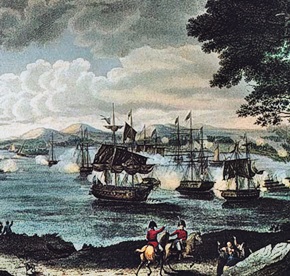
1814 – At the Battle of Plattsburgh (a/k/a Battle of Lake Champlain), British forces were defeated, effectively bringing an end to the War of 1812.
The British, with 9,000 troops available, held a strong manpower advantage over the 3,000 U.S. regulars, but the addition of 2,000 volunteers from the Vermont militia – and 700 more from New York – turned the tide.
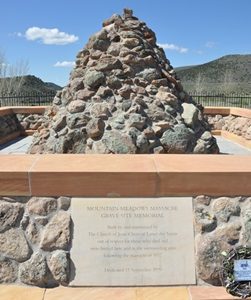
1857 – Approximately 120 men, women and children in a wagon train traveling from Arkansas and Missouri to California were murdered by Mormon militiamen at the Mountain Meadows Massacre in southern Utah.
In the summer of 1857, the Mormons expected an all-out invasion of apocalyptic significance. From July to September 1857, Mormon leaders and their followers prepared for a siege. Mormons were required to stockpile grain, and were warned about selling grain to emigrants for use as cattle feed.
They sought to enlist the help of Native American tribes in fighting the “Americans”, encouraging them to steal cattle from emigrant trains, and to join Mormons in fighting the approaching army.
Intending to give the appearance of Native American aggression, the militia’s plan was to arm a band of Southern Paiute Native Americans and persuade them to join with a larger party of their own militiamen – disguised as Native Americans – in an attack. During the militia’s first assault on the wagon train (Sept. 7) the emigrants fought back, and a five-day siege ensued.
The wagon train was running low on water and provisions, and allowed some approaching members of the militia – who carried a white flag – to enter their camp. The militia members assured the emigrants they were protected and escorted them from the hasty fortification.
After walking a distance from the camp, the militiamen, with the help of auxiliary forces hiding nearby, attacked the travelers and killed all of them they thought were old enough to be potential witnesses to report the attack.
Seventeen children, all younger than seven, were the only travelers spared.

1916 – The Quebec Bridge – a road, rail and pedestrian bridge across the lower Saint Lawrence River between Quebec City and Lévis, Quebec, Canada – collapsed for the second time in nine years.
In 1907, 75 workers were killed and 11 injured when the bridge, the design of which was later determined to be insufficient to support its own weight, completely collapsed.
On September 11, 1916, the bridge’s center span fell into the St. Lawrence River while it was being hoisted into place, killing 13 workers.
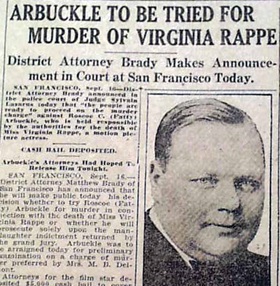
1921 – Roscoe “Fatty” Arbuckle, a silent-film era performer at the height of his fame, was arrested in San Francisco for the rape and murder of aspiring actress Virginia Rappe.
Arbuckle was later acquitted by a jury, but the scandal essentially put an end to his career.
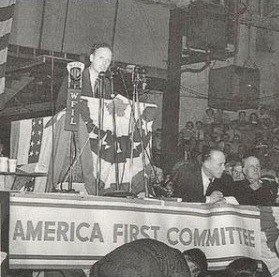
1941 – In a speech at an America First rally at the Des Moines Coliseum in Iowa, aviator Charles Lindbergh sparked charges of anti-Semitism when he blamed “the British, the Jewish and the Roosevelt administration” for trying to draw the United States into World War II.


1941 – Construction on the Pentagon began – 60 years to the day before the terrorist attacks of 2001.
The U.S. War Department was rapidly expanding in anticipation that the United States would be drawn into World War II. Secretary of War Henry Stinson told President Franklin Roosevelt that a permanent building was needed; one large enough to hold 40,000 people.
Requirements for the new building were that it be no more than five stories tall, and that it use a minimal amount of steel. The requirements meant that instead of rising vertically, the building would be sprawling over a large area.
With a square or rectangle shape ruled out, the building design was modified into a pentagon which was reminiscent of a 17th-century fortress or a “star fort” Civil War battlement, such as Fort McHenry (shown above).
The Pentagon includes a five-acre central plaza, which was informally known as “ground zero” – a nickname originating during the Cold War on the presumption that it would be targeted by the Soviet Union at the outbreak of nuclear war.

1944 – A Royal Air Force bombing raid on Darmstadt, Germany created a firestorm which had devastating results.
To create the firestorm, a number of incendiary bombs were dropped around the city before explosive blast bombs were dropped, thus beginning a self-sustaining combustion process in which winds generated by the fire ensured it continued to burn until everything possible has been consumed.
An estimated 11,000 to 12,500 of the inhabitants burned to death, and 70,000 were left homeless

1959 – Actor Paul Douglas died of a heart attack at the age of 52.
Among his more than 40 films, Douglas is best remembered for two baseball comedy movies; It Happens Every Spring and Angels in the Outfield.
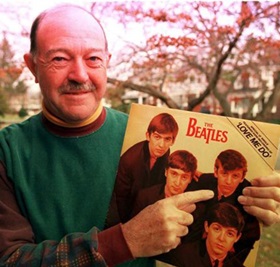
1962 – The Beatles recorded their first single, Love Me Do and P.S. I Love You, at EMI studios – long before the name was changed to Abbey Road Studios – in London.
Producer George Martin brought in drummer, Andy White (pictured above), for the session and relegated Ringo Starr to playing a tambourine. White’s version can be heard on the Please Please Me album, while Ringo’s drumming (recorded one week earlier) was heard on the single.
There is a very easy way to tell the difference between the two versions. If you can hear a tambourine, then you’re listening to Andy White – who died in 2015 – on drums.
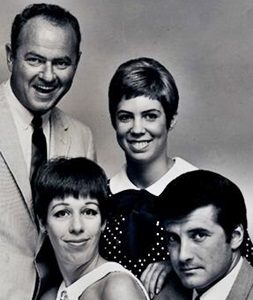
1967 – The Carol Burnett Show debuted on CBS. The show would run until 1978 and win 25 prime-time Emmy Awards.
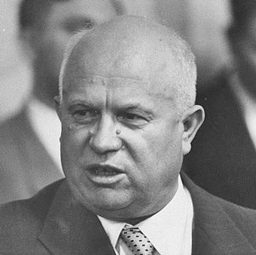
1971 – Former Soviet leader Nikita Khrushchev, one of the most significant figures of the Cold War, died at the age of 77.
The 1962 Cuban missile crisis was viewed as a terrible embarrassment for the Soviet Union. In 1964, Khrushchev’s opponents organized a political coup against him and he was forced into retirement. The remainder of his life was rather solitary as he was forgotten by most and reviled by many in Russia.
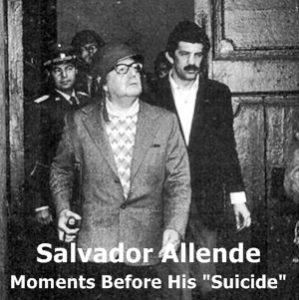
1973 – Chile’s armed forces staged a coup d’état against the government of President Salvador Allende. He survived the attack but reportedly committed suicide – although many still believe he was murdered – as troops stormed the burning palace.
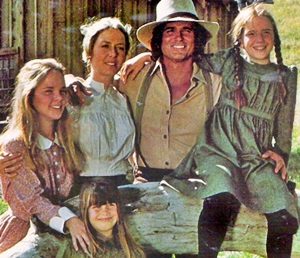
1974 – Little House On The Prairie premiered on NBC. The program would run for nine seasons.

1976 – A group of Croatian nationalists planted a bomb in a coin locker at Grand Central Terminal. After stating political demands, they revealed the location and provided instructions for disarming the bomb. The disarming operation was not executed properly and the bomb exploded, killing Brian Murray, a NYPD bomb squad specialist.

1977 – Steve Biko, leader of South Africa’s “Black Consciousness Movement,” was dumped, naked and shackled, on the floor of a police vehicle and driven 740 miles to Pretoria Central Prison.
How and why he was in that situation (and condition) still defies belief.
Biko and an associate had been arrested on August 18 and held prisoner under the 1967 Terrorism Act that allowed indefinite detention without trial for the purposes of interrogation in solitary confinement.
On the morning of September 6, Biko was being interrogated by five policemen when a “scuffle” erupted. Biko was beaten with a pipe, and thrown headfirst into a wall, after which he collapsed. The policemen then shackled Biko upright to a security gate with his arms spread out and his feet chained to the gate, in a crucifixion position. They left Biko chained to the gate and did not call for a doctor for 24 hours.
District surgeons employed by the government examined Biko on September 7. Despite evidence of neurological damage, the doctors did not record any external injuries.
When Biko’s condition did not improve and he lapsed into semi-consciousness, Dr. Benjamin Tucker recommended that Biko be sent to a hospital. On September 11, the security police transported Biko to Pretoria Central Prison (without any medical records). Biko died the next day, shortly after his arrival in Pretoria.
An autopsy revealed an “extensive brain injury” had caused “centralisation of the blood circulation to such an extent that there had been intravasal blood coagulation, acute kidney failure, and uremia”.
In announcing his death, South African authorities claimed Biko died after refusing food and water for a week in a hunger strike.
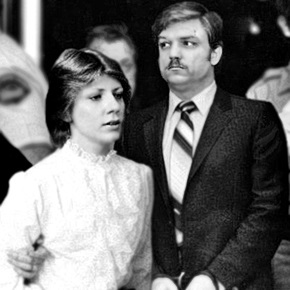
1978 – Gerald and Charlene Adelle Gallego began a two-year killing spree in Sacramento, CA. They killed a total of 10 victims, mostly teenagers, whom they kept as sex slaves before killing them.
In 1984, Gerald Gallego was tried for murder in both California and Nevada (where several of the murders took place). In exchange for her testimony againt Gerald, Charlene was not charged in California and she agreed to plead guilty to murder and received a sentence of sixteen years and eight months in Nevada.
Gerald was convicted in both states and sentenced to death in both of them, but he died in prison before his sentence could be carried out.
Charlene Gallego was released from prison in Nevada in July 1997.

1985 – Pete Rose of the Cincinnati Reds recorded his 4,192nd base hit, breaking Ty Cobb’s career record.
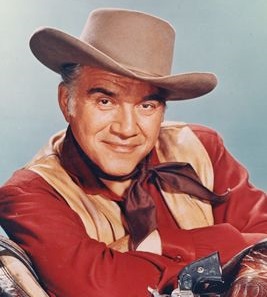
1987 – Actor Lorne Greene of Bonanza and Battlestar Galactica fame died of complications from pneumonia, following ulcer surgery. He was 72.
Long before he became a household name on American television, Greene – a native Canadian – was the news anchor on the CBC National News and his deep, authoritarian voice quickly propelled him to prominence as Canada’s top newscaster.

1987 – Dan Rather, angered because CBS decided to shorten the CBS Evening News to broadcast the end of a U.S. Open tennis tournament, walked off the set and caused the network to “go black” for six minutes.
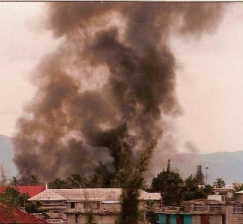
1988 – The Saint-Jean Bosco massacre took place in Haiti. At the conclusion of a three-hour rampage on the Saint-Jean Bosco church packed with 1000 parishioners, the church was burned down thereby making it impossible to verify the total number of deaths.
The massacre was carried out without resistance by police or the army, despite the church being opposite a barracks. According to one witness, the police and army provided protection for the attackers encircling the church.

1991 – A Continental Express commuter plane bound for Houston crashed after breaking up in mid-air, killing 14 people. The aircraft wreckage hit an area near Eagle Lake, TX, located approximately 65 miles from its destination.
The Embraer EMB 120 Brasilia aircraft was scheduled for maintenance the afternoon before its scheduled 7 a.m. flight on this date. Short of workers, an inspector was drafted to assist the afternoon maintenance crew.
The inspector worked on putting the screws on the plane’s horizontal stabilizer but did not finish the job. When his shift was over, he told the foreman about the remaining screws but did not write it down, as proper procedure required.
The foreman failed to tell the workers on the late-night shift about the unfinished work; they saw the horizontal stabilizer in its correct position but did not notice that all the screws were not properly in place.
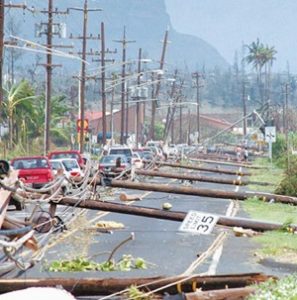
1992 – Hurricane Iniki, the most powerful hurricane to strike the state of Hawaii in recorded history, slammed into the island of Kauai with sustained winds of 145 miles per hour – and gusts as high as 225 mph.
Over 1,400 houses were destroyed and more than 5,000 more were severely damaged. The Central Pacific Hurricane Center failed to issue tropical cyclone warnings and watches 24 hours in advance, yet miraculously, only six deaths ensued.

1994 – Academy Award winning actress Jessica Tandy died at the age of 85.
She appeared in over 100 stage productions, winning the Tony Award for Best Actress three times. Her movie career was equally successful. She won the Academy Award for Best Actress for her role in Driving Miss Daisy, and was nominated for the Academy Award for Best Supporting Actress for Fried Green Tomatoes.
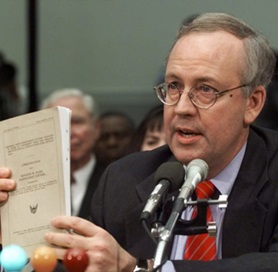
1998 – Independent counsel Kenneth Starr sent a report to the U.S. Congress accusing President Bill Clinton of 11 possible impeachable offenses. The report offered graphic details of Clinton’s alleged sexual misconduct and leveled accusations of perjury and obstruction of justice.

2001 – In a series of coordinated suicide attacks by 19 members of the Islamic terrorist group al-Qaeda, the United States suffered the darkest day in its history.
Two hijacked aircraft crashed into the North and South towers, respectively, of the World Trade Center complex in New York City. Within an hour and 42 minutes, both 110-story towers collapsed, with debris and the resulting fires causing partial or complete collapse of other buildings in the World Trade Center complex, including the 47-story 7 World Trade Center tower, as well as significant damage to ten other large surrounding structures.
A third plane smashed into The Pentagon, while a fourth plane crashed in a field near Shanksville, Pennsylvania.
A total of 2,977 innocent people were killed. Although al-Qaeda’s leader, Osama bin Laden, initially denied any involvement, in 2004 he claimed responsibility for the attacks, citing U.S. support of Israel, the presence of U.S. troops in Saudi Arabia, and sanctions against Iraq as motives.
They say the wheels of justice turn slowly — but now they’ve ground to a virtual halt. Seventeen years after the worst terrorist attack on U.S. soil, five 9/11 suspects — including self-avowed mastermind Khalid Sheikh Mohammed — have not faced trial.
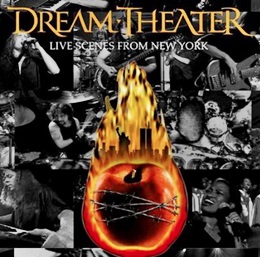
2001 – Terrible Timing, Part 1:
Dream Theater, a progressive metal band, released a live album (Live Scenes from New York). The cover depicted an apple (as in “Big Apple”) and a burning New York City skyline (including the World Trade Center buildings) in the flame above the apple. The album was quickly recalled by the band and was re-released with revised artwork.
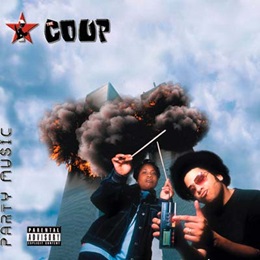
2001 – Terrible Timing, Part 2:
A rap group named The Coup were scheduled to release a new album called Party Music. The original album cover art depicted the 2 group members standing in front of the World Trade Center towers as they are destroyed by huge explosions in the background.
By an incredible coincidence, the album cover was designed and finished in June 2001, 3 months prior to the 9/11 attacks, and was originally scheduled to be released in mid-September.
In response to the uncanny similarity to the September 11 attacks, the album release was delayed until November of that year, and the released album cover was completely changed.
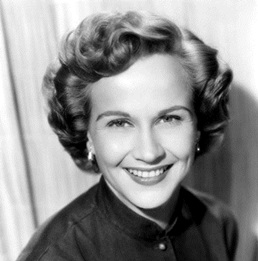
2002 – Academy Award winning actress Kim Hunter died of a heart attack at the age of 79.
She was best known for her performance as Stella Kowalski in A Streetcar Named Desire, for which she won the Oscar for Best Supporting Actress.

2002 – Football Hall of Fame quarterback Johnny Unitas died at the age of 69.
Unitas, a two-time NFL Most Valuable Player, is considered by many as one of the greatest quarterbacks of all-time.

2003 – Actor John Ritter died during surgery to repair a torn aortic dissection. He was 54.
He was best known for playing Jack Tripper on the ABC sitcom Three’s Company, and for his masterful dramatic performance in the film Sling Blade.
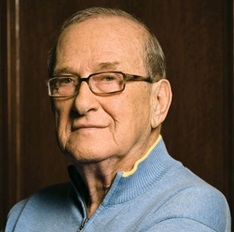
2009 – Larry Gelbart, most famous as a creator and producer of the television series M*A*S*H, died of cancer at the age of 81.
Gelbart’s best known screen work was Tootsie, which earned him an Academy Award nomination for Best Screenplay.

2010 – Actor Kevin McCarthy died of pneumonia at the age of 96.
Although he was nominated for an Academy Award for Best Supporting Actor in Death Of A Salesman, McCarthy was perhaps best known for his role in Invasion of the Body Snatchers.
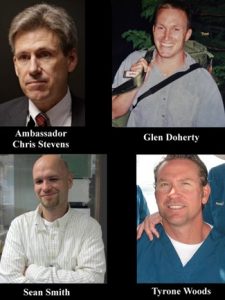
2012 – The U.S. consulate in Benghazi, Libya, was stormed, looted and burned down, resulting in the deaths of U.S. Ambassador J. Christopher Stevens and Information Officer Sean Smith. Several hours later, a second assault targeted a different compound about one mile away, killing CIA contractors Glen Doherty and Tyrone Woods.
Initially, top U.S. officials and the media reported that the Benghazi attack was a spontaneous protest triggered by an anti-Muslim video, Innocence of Muslims. Subsequent investigations determined that there was no such protest and that the incident started as a premeditated attack that was quickly joined by rioters and looters.
On September 28 – 17 days after the attack – a spokesman for the Director of National Intelligence stated “As we learned more about the attack, we revised our initial assessment to reflect new information indicating that it was a deliberate and organized terrorist attack carried out by extremists.”
Compiled by Ray Lemire ©2018 RayLemire.com / Streamingoldies.com. All Rights Reserved.
All I can say is WOW WOW WOW, thanks for all your hard work in putting this together.
Thank you, Nancy. It was a lot of work.
I never realized how much happened on this date! Great job on all the research. What a day!
Thank you so much, Brenda